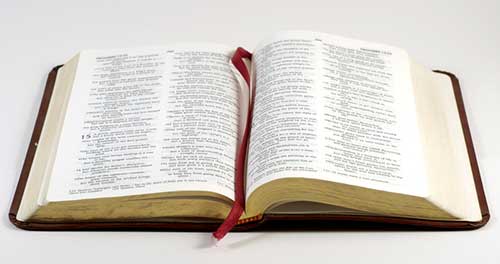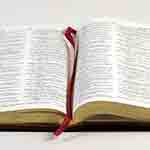
Actually, this post wasn’t part of my planned series – it is reflecting about on-and-off-site discussions. In some way, this post could be titled Disagreeing with “disagreeing with the Bible”.
If you want to catch up on what’s been covered so far, read the posts and the comments:
Read Disagreeing With The Bible Part 1
and Disagreeing With The Bible Part 2
and Disagreeing With The Bible 3
and The Bible Says
and Disagreeing With The Bible 4
Friend and fellow-blogger, Peter Carrell, pointed to an article which stands in helpful dialogue with this series:
Apropos @Liturgy 's current posts on the Bible https://t.co/3sF42vqcIl
— Peter Carrell ن (@petercarrell) November 5, 2018
In the post Peter points to, its author, The Rev. Dr Ian Paul begins with
the apparent contradictions between the two accounts of Judas’ death, in Matt 27.3–8 and in Act 1.18. In the first, Judas hangs himself, the priests buy the field, and it is named ‘Field of Blood’ because of the betrayal by Judas. In the second, briefer account, Judas buys the field first, falls to his death there, and it is named ‘Field of Blood’ because of Judas’ death.
Ian Paul’s post is responding to Mark Woods. Mark presents a pretty classic combining of the two stories:
Judas hanged himself on a tree – as told by Matthew – at the top of a cliff. The rope broke and he fell all the way to the bottom. When he landed, he suffered the injuries described in Acts 1.
Like Mark Wood, I find this unnecessarily complicated and complicating. Ian Paul, however, contends
If there really are two stories, and they really cannot be reconciled, the logical conclusion is not that one is right and one is wrong—but that they are both wrong since historical reliability (at least in our understanding of the idea) is not important to the NT writers.
Already, Ian Paul is making an assumption that I think needs challenging: that the approach, purpose, skills, and knowledge of all NT writers are identical, and that the genres of their texts are homogenous. I suggest it is logically possible that to one NT writer (and his text) “historical reliability (at least in our understanding of the idea)” may very well be important, whilst another may have a different approach. So one version may be historically correct and the other not.
Ian Paul goes on to describe an event as if filmed and edited quite differently for two different films – so much so that if you were watching the two versions, one might not spot immediately that this was the same event. For him, something like this is at work in disagreeing biblical material. He contends that “it is vital that [reconciling the two stories of Judas’ death] is possible”. “If they cannot be reconciled”, he says, “if they are not at some level reliable accounts of what happened—then they are not a credible witness. And if they are not, then they cannot tell me the truth about Jesus Christ.”
This, I suggest, is a path to a shrinking church for intelligent people. Ian Paul’s article would have us abandon the Bible as presenting the Truth if we find even one irreconcilable historical detail, one point we disagree with it. I am not prepared to do that.
To me, the Bible is more akin to a series of paintings than to a collection of videos.
I am with Mark Woods:
I don’t believe for one moment that the Bible is compromised by honesty about the parts where it contradicts itself or where the biblical writers, speaking spiritual truth in the context of erroneous ideas about science and nature, simply got things wrong.
During this Southern Hemisphere summer holiday period, posts will be less frequent, and any comments may take longer to get onto the site.
If you appreciated this post, consider liking the liturgy facebook page, using the RSS feed, and/or signing up for a not-very-often email, …




I wonder about how these folks would reconcile the contradictions of Saul’s experience on the road to Damascus? They aren’t stories one can interleave/combine, as with Judas and the Field of Blood. They blatantly contradict one another.
From The Book of Common Prayer (Cockaigne, 1979)
Evening Prayer, Advent Rubrics, The Second Saturday
The Solemn Evensong commonly called The Blessing of the Bibles.
“It is traditional for this service to be sung. The service proceeds as for any Solemn Evensong according to the use of this church, with the exceptions following.
“After the greeting, Thomas Cranmer’s collect for the second Sunday in Advent is recited by all, then the officiant continues “O God make speed to save us.”
“At the time appointed for readings, one thurifer, one crucifer, two lucifers, and one or more drivers of forklifts bearing pallets of stacked bibles in every language spoken in that place shall process to the chancel. The forklifts shall lower the pallets to the floor in a reverent manner and withdraw. The officiant shall cense the Bibles.
“In place of the Old Testament reading, passages of the scriptures that do not make literal sense are read aloud without comment. These always include those cited by St Augustine of Hippo in De Doctrina Christiana, and at least the laws of Leviticus on kashrut, ritual washing, and metsora. The ordinary may appoint a further selection of difficult texts to be read.
“If there are protesters outside the church, this is an appropriate time to take them tea and crumpets.
“The traditional Gospel reading is from the seventh chapter of St Mark, verses 1-23. The translation read must be one approved for public worship in this church.
“Two homilists briefly explain the reading. Notwithstanding the approved translation read, one homilist construes the Greek word *pugme* in verse 3 as a dative feminine singular noun cognate with Latin *pugnus*, a fist for ritual washing, and explains the text accordingly. The other does not. Neither homilist reads the Gospel of St Thomas, but either may mention that they are not mentioning Saying 14.
“After the benediction, the forklifts take up their pallets and drive to the banquet, escorted by the thurifer, crucifer, and lucifers. The clergy, choir, people and protesters follow.
“Notwithstanding the gospel and homily, basins with hand towels are available.
“The officiant, or the ordinary if present, blesses the food.
“The banquet is bread served with a fire-cooked paella of rice and the local sauce with at least lamb, pork, and shellfish. When serving, it is customary to sprinkle some local cheese in the bowl.
“After all have been served, the basins are refilled with wine, especially if a recent wedding is to be celebrated later with dancing.
“As the wine is poured, each person who can mentions to a neighbour some occasion on which God spoke to her or him from the scriptures. When all who will drink it have wine, the cook proposes a toast to all faithful reading of God’s word.
“Dancing begins.
“Compline is recited in the church.
“No person departs into the night without a Bible, either to read or to give.”
BW
Thanks, Bowman! Although not authorised as a formulary in the Anglican Church in Aotearoa, New Zealand and Polynesia, it is allowed by A Form”for Ordering A Service of the Word and encouraged by The Anglican Worship Template. Blessings.